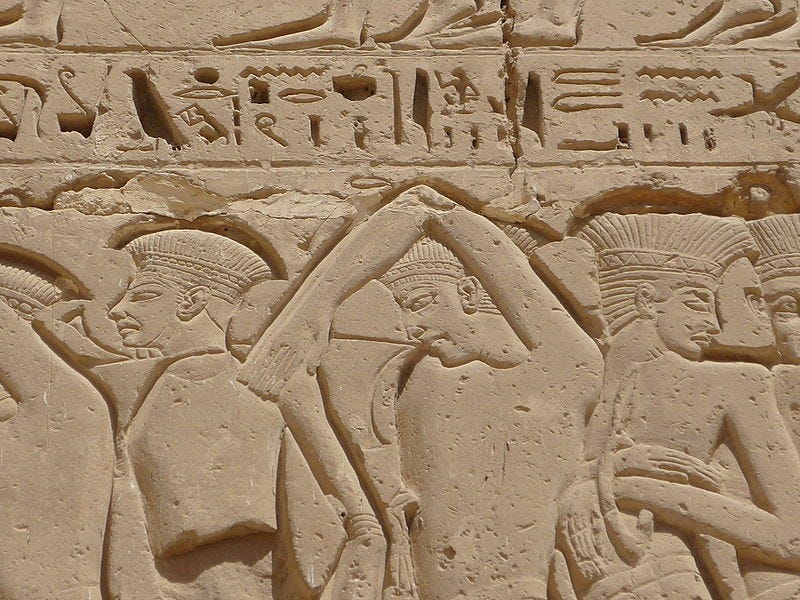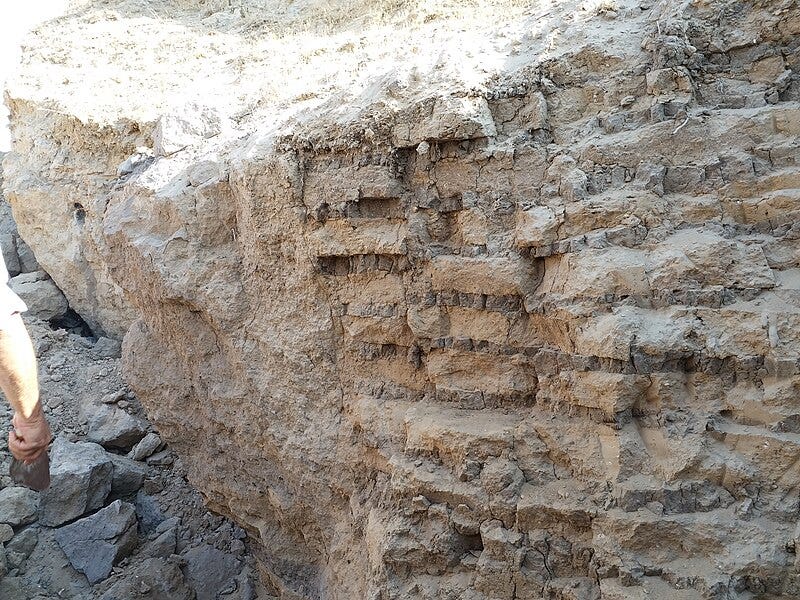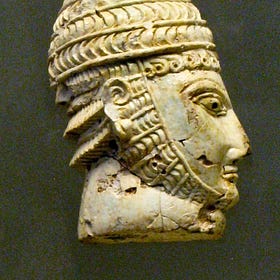Who Were the Real Philistines Mentioned in the Bible?
Archaeology and genetics are helping us understand the origins of the sworn enemies of the Israelites mentioned in the Bible
As the ceasefire continues between Israel and Palestine, Gaza must have appeared in your newsfeed recently, albeit with a few shocking proposals on rebuilding the region. Ashkelon is another city that made the headlines during the current conflict between Israel and Palestine, though it may not have received as much attention as Gaza.
These cities are no strangers to violence.
A group of five cities—Gaza, Ashkelon, Gad, Ashdod, and Ekron—once made up Philistia, the home of the ancient Philistines, the archrivals of the Israelites in the Bible.
“Philistine” is a derogatory term for a crude and uncultured individual. Recent archaeological finds cast a new light on the Philistines. They weren’t a boorish and unsophisticated bunch. They had well-developed towns, an organized military, a prosperous society, and engaged in long-distance trade. The Philistines built a civilization that lasted for half a millennium.
Who were these enigmatic people? Where did they come from? Did the Philistines and Israelites actually fight?
Let’s find out!
We’ll begin our search for the origins of the Philistines in Egypt. But first, we need some background on the complicated relationship between Egypt and Canaan to understand why the people we call the Philistines settled in the Levant.
Why Canaan was essential for Egypt’s defense
The kingdom of Canaan, located in the southern Levant, included parts of modern-day Israel, Palestine, Jordan, and southern Syria and shared borders with ancient Egypt.
Around 4500 BC, people from Anatolia and Mesopotamia moved to the Levant, establishing the Ghassulian culture. The first cities in Canaan emerged during the Early Bronze Age (3500 to 2500 BC), including En Esur and Meggido.
Tell es-Sakan is an archeological site five kilometers from present-day Gaza City. By the time Egypt was under Pharaonic control, around the close of the fourth millennium BC, the location was already a well-established Egyptian settlement. The community, a precursor to Gaza, was highly fortified, indicating its strategic importance to Egypt.
Gaza became a Canaanite metropolis by 2650 BC. Archaeological evidence indicates that the Egyptians abandoned it, and the Canaanites rebuilt and strengthened the city. However, at approximately 2300 BC, Gaza was abandoned again.
Canaan was Egypt's major trading partner. During the Middle Kingdom Period (2030-1650 BC), records from Pharaoh Senusret II's reign, 1890 BC, show that "parties of Western Asiatic foreigners visited the Pharoah bearing gifts." These "foreigners" were probably Canaanites.

Later, Canaanite immigrants to Egypt, known as the Hyksos, deposed the Egyptian pharaohs and ruled for a century (1650 BC to 1550 BC).
After overthrowing the Hyksos, the militaristic New Kingdom made Canaan its prime goal, treating it as an Egyptian client state. For the Egyptians, Canaan was strategically significant because being ruled by a foreign people was humiliating, and the Pharaohs were determined never to let that happen again. They interfered in Canaanite affairs, deposing monarchs hostile to Egypt and installing puppet rulers.
By the fifteenth century BC, Gaza and Ashkelon were established Egyptian garrison towns.
Egypt believed its borders were now safe.
However, the regional dynamics were soon altered by a catastrophic collapse.
Philistines: One of the Sea Peoples?

The Medinet Habu archaeological site is on the West Bank of the River Nile, opposite the city of Luxor. The mortuary temple of Pharaoh Ramses III is one of the site’s most well-known remnants.
Ramses III ( ruled from 1186 BC to 1155 BC) is famous for his clash with the Sea Peoples. The Sea Peoples were a confederation of tribes hailing from different lands blamed for the Bronze Age Collapse. If you want to learn more about the Sea Peoples and why they attacked cities during the Late Bronze Age, check out my earlier write-up.
If you’d rather skip the story and get the gist, here’s what you need to know:
The Late Bronze Age saw the collapse and destruction of many of the great Near Eastern civilizations, including the Mycenaeans, the Minoans, the city-states of the Levant, and the Hittites. This catastrophic sequence of events is called the Late Bronze Age Collapse (1200 BC to 1150 BC).
The Sea Peoples, a band of seafaring marauders, were held responsible for the wanton damage. Later analysis reveals that many of them were citizens of the declining powers, and not all of them came from the sea.
Weakened polities were an easy target for the Sea Peoples. A system collapse caused by drought, food shortages, internal rebellions, and interrupted trade networks incapacitated once-mighty Bronze Age powers. The Sea Peoples took advantage of the chaos and dealt a fatal blow to the crumbling civilizations.
Egypt survived the Bronze Age Collapse thanks to Ramses III’s victory against the Sea Peoples at the Battle of the Delta in 1175 BC. The Egyptians took the Sea Peoples as prisoners and re-settled them throughout the empire.
The Pharaoh was glowing with victory and left us an extensive record. Here’s what he had to say about the Sea Peoples:
The foreign countries (i.e. Sea Peoples) made a conspiracy in their islands. All at once the lands were removed and scattered in the fray. No land could stand before their arms: from Hatti, Qode, Carchemish, Arzawa and Alashiya on, being cut off (i.e. destroyed) at one time. A camp was set up in Amurru. They desolated its people, and its land was like that which has never come into being. They were coming forward toward Egypt, while the flame was prepared before them. Their confederation was the Peleset, Tjeker, Shekelesh, Denyen and Weshesh, lands united. They laid their hands upon the land as far as the circuit of the earth, their hearts confident and trusting: ‘Our plans will succeed’.
You’re probably thinking, this was supposed to be a conversation about the Philistines. What does this have to do with the Sea People? If you check Ramses’ inscription, one group deserves our special attention.
The Peleset.
You’re on the right track if the name reminds you of “Palestine” or “Philistine.” The Peleset were the ancestors of the Philistines. After defeating them, Ramses III moved them to southern Canaan and tasked them with defending Egypt’s borders.
You might wonder: isn’t it a bit of a stretch to conclude that the Peleset were Philistines just because they sound similar? Is there any archaeological evidence to back up this theory?
Brace yourselves for a story of pots, pigs, and a boat from the Aegean.
Keep reading with a 7-day free trial
Subscribe to Forgotten Footprints to keep reading this post and get 7 days of free access to the full post archives.




